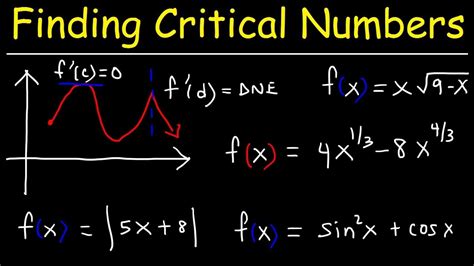How to Find a Critical Value: A Step-by-Step Guide
Finding the critical value is a crucial step in many statistical hypothesis tests. It's the threshold you compare your test statistic to, determining whether to reject or fail to reject your null hypothesis. This guide will walk you through the process, explaining different scenarios and methods.
Understanding Critical Values
Before diving into calculations, let's clarify what a critical value represents. It's the point on the distribution of your test statistic that separates the rejection region (where you reject the null hypothesis) from the non-rejection region (where you fail to reject the null hypothesis). The location of this critical value depends on:
- Significance level (α): This is the probability of rejecting the null hypothesis when it's actually true (Type I error). Common significance levels are 0.05 (5%) and 0.01 (1%).
- Degrees of freedom (df): This represents the number of independent pieces of information used to estimate a parameter. The calculation of degrees of freedom varies depending on the statistical test.
- Type of test (one-tailed or two-tailed): A one-tailed test focuses on a specific direction (e.g., greater than or less than), while a two-tailed test considers deviations in both directions.
Methods for Finding Critical Values
The method for finding a critical value depends on the statistical test you are performing. Here are some common scenarios:
1. Using a Z-table (for Z-tests)
Z-tests are used when you know the population standard deviation. To find the critical value:
- Determine your significance level (α): Let's say α = 0.05 for a two-tailed test.
- Divide α by 2 for two-tailed tests: For a two-tailed test, α/2 = 0.025. This is because you're splitting the rejection region between both tails of the distribution. For a one-tailed test, you use α directly.
- Look up the corresponding Z-score: Find the Z-score that corresponds to a cumulative probability of 1 - α/2 (or 1 - α for a one-tailed test) in a Z-table. For a two-tailed test with α = 0.05, you'd look for 1 - 0.025 = 0.975. The Z-score is approximately 1.96.
- Consider the direction: For a two-tailed test, you have two critical values: -1.96 and 1.96. For a one-tailed test, you'll only have one critical value (positive for a right-tailed test and negative for a left-tailed test).
2. Using a T-table (for T-tests)
T-tests are used when you don't know the population standard deviation and estimate it from the sample. The process is similar to using a Z-table, but you'll also need:
- Degrees of freedom (df): This is typically calculated as n-1, where 'n' is your sample size.
- Look up the critical t-value: Use a t-table with the appropriate degrees of freedom and significance level to find the critical t-value. Remember to consider whether it's a one-tailed or two-tailed test.
3. Using Statistical Software
Statistical software packages like R, SPSS, Python (with libraries like SciPy), and Excel can easily calculate critical values for various tests. These tools are particularly useful for more complex tests or when dealing with large datasets. Simply input your significance level, degrees of freedom, and type of test, and the software will provide the critical value.
Interpreting Critical Values
Once you've found your critical value, compare it to your calculated test statistic.
- If your test statistic falls within the rejection region (beyond the critical value(s)), you reject the null hypothesis.
- If your test statistic falls within the non-rejection region (inside the critical value(s)), you fail to reject the null hypothesis.
Remember to always clearly state your significance level, degrees of freedom, and the type of test when reporting your results. This ensures the transparency and reproducibility of your analysis.
This comprehensive guide should help you confidently find and interpret critical values in your statistical analyses. Remember to choose the appropriate method based on the specific test you're conducting and always double-check your calculations.
